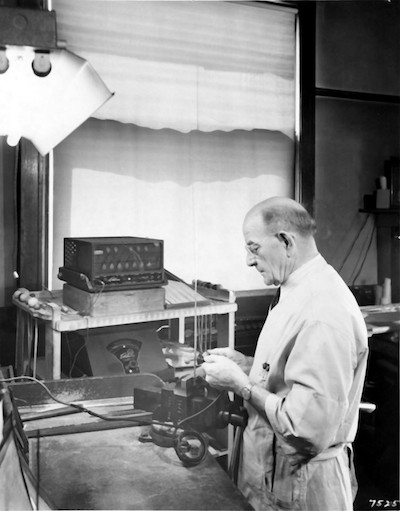|
Tuning Before the adoption of A=440 as the standard pitch by the AFM in 1917 (and the U.S. Bureau of Standards in 1922), any Deagan instrument could be purchased in Low Pitch (French Diapason Pitch, A=435), High Pitch (Old English Pitch, A=454), or American Standard High Pitch (A=461). The various tunings were indicated with "LP," "L," "H," "Symphony Pitch," etc. In 1917, Deagan abandoned this practice and all instruments were made only in A=440 pitch. Deagan's Chief Tuner, Henry J. Schluter, perfected harmonic tuning in wood bar instruments in 1927. Quint tuning is used for xylophone bars and is the tuning of the fundamental and the partial an octave plus a perfect fifth above the fundamental. Octave tuning is used for marimba bars and is the tuning of the fundamental and the partial two octaves above the fundamental. Before 1927, only the fundamental was tuned. If instruments manufactured before 1927 are subsequently retuned, a skilled tuner can either tune only the fundamental, or optionally tune the harmonics as well using quint tuning or octave tuning methods. The trade off is that harmonic tuning involves the removal of a lot of wood. One must weigh whether the harmonics are worth the removal of so much of the bar. However, bars without harmonic tuning can sound sharp when played on the edge or anywhere outside the center of the bar. This makes the use of instruments with only fundamental tuning unsuitable for symphony orchestra work as they may not sound in tune with the rest of the orchestra.  Henry J. Schluter 1889 - 1971 |
